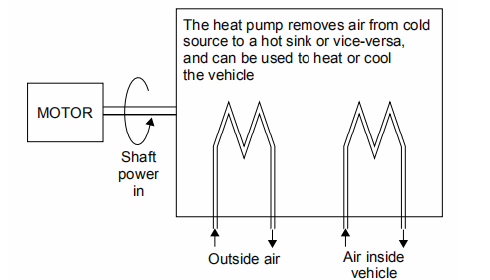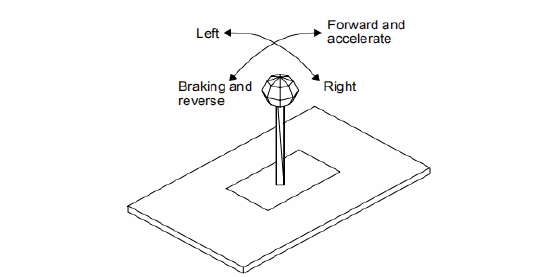本文是一篇英语论文,本翻译实践从技术英语文本《电动汽车技术解释》中选取第九章和第十章作为翻译材料,整个实践是在奈达功能对等理论的指导下进行的。技术英语将英语与不同领域的科技知识紧密结合,在专业语言中不加修饰地呈现事物的真实面貌,陈述客观事实。因此,科技英语具有逻辑严密、科学准确、语言结构清晰简洁的特点。不可避免地,译文也应具有专业性、客观性和准确性,以及清晰流畅的特点。本实践报告展示并分析了在词汇层面、句法层面和语篇层面实现这一目标所应采用的方法和技巧。
Chapter 1 Introduction
1.1 Introduction of the Source Text
The source text is written by James Larminie and John Lowry. Dr. John Lowry is an engineer who was once a member of the academic community. He co-authored the first edition of Electric Vehicle Technology Explained with Jon Lowry, which was published by John Wiley & Sons in 2003.
The source text consists of eleven chapters, and the translator has taken Chapter Nine and Chapter Ten as the translation materials. Chapter Nine mainly talks about the design of ancillary systems, including heating and cooling systems, the controls, power steering, tyres and wing mirrors, aerials and luggage racks, and electric vehicle recharging and refueling systems. And electric vehicles and the environment are discussed in Chapter Ten where the author researches the alternative and sustainable energy and vehicle pollution. This book is useful to academics and students majoring in electrical engineering, mechanics, and power and automation. It is a handbook on the theory of electric vehicle design and application.
The characteristics of technical English are manifested in several aspects. First of all, at the lexical level, scientific writing is precise and compact in the plenty use of technical words and semi-technical words. Scientific English is a language which is used to state what happens or appears in the scientific and technological fields and describes laws, characteristics, and processes of such fields, so it tends to be objective and accurate with logical relationship and rigorous structure, so as to better present the development and research of the scientific and technological areas. At the syntactic level, nominalization, complex sentences and passive sentences are extensively used and there is also a higher frequency of conditional sentences in EST (English of Science and Technology).

Figure 9.3 Schematic of a heat pump
.....................................
1.2 Significance of the Translation Task
It is well known that science and technology are the first productive force. Keeping up with the current cutting-edge information of science and technology, we can have a voice in technological development. As governments and automobile manufacturing businesses at home and abroad are conducting a research of new energy vehicles, the development of electrical vehicles have been greatly facilitated. Volkswagen of Germany displayed a pure electric concept car E-up at the sub-auto show in 2009, which is equipped with lithium-ion power batteries. Japan has set a tactic goal for the development and promotion of fuel cell vehicles. It plans to produce 5 million fuel cell vehicles domestically by 2020. By 2030, fuel cell vehicles will be fully promoted. Countries such as the United States, Japan, Germany, and Israel have all formulated plans for the promotion of pure electric vehicles, and the building of charging systems for electric vehicles is rapidly following up.
The start of the research and development of new energy vehicles in China was very late, but the administration attaches great importance to it. Since the “Eighth Five-Year Plan”, the research of new energy vehicles has been a major national project. In 2001, the “Electric Vehicle Major Technology Special Project” was established. According to China's “Tenth Five-Year Plan” of science and technology development plan, the government has given strong support to electric vehicle projects. With the fast development of China's new energy technology, more and more new energy vehicles have been produced and are playing an increasingly important role in people’s daily life. This is the reason why the translator chooses Electric Vehicle Technology Explained as the translation material.
...........................
Chapter 2 The Functional Equivalence Theory
2.1 An Overview of the Theory
As we know, the famous linguist Nida proposes that “translation is a representation or reaction in one language of what is written or said in another language. Translation consists in reproducing in the receptor language the closest equivalent of the source-language message, first in terms of meaning, and secondly in terms of style.” (Nida, 2003:12)
Nida has developed his theory based on his own translation practice, which eventually becomes one of the scriptures of translation studies. The central concept of Nida’s hypothesis is “functional equivalence”. The implication of “functional equivalence” is that translation does not engage in a rigid correspondence of literal meaning, but a functional equivalence between two languages. It tries to create translations that accord with the semantics of the source text and retain the cultural features of the source text. However, the cultures of two languages are totally different. Therefore, it is impossible for a translated text to totally reproduce the cultural features of the source text, but the translator should at least strive to make the translation intelligible and understandable to the target readers. If meaning and culture cannot be achieved simultaneously, the form equivalence can be dropped and priority should be given to the equivalence of meaning. In this manner the translator could alter the form of the source text so as to attain semantic and cultural equivalence to the source text. If the conversion in form is still inadequate to reproduce the original semantics and culture, the translation technique of “Recreation” can be adopted to cope with this problem, so that the target language is consistent with the source language in meaning. “recreation” means the conversion of the structure of the source language into the structure of the target language. In other words, the translator could utilize vocabularies of the target language to illustrate the cultural implication of the source language.
...............................
2.2 Its Guiding Significance
Electric vehicles are growing in popularity in the last few years, and technical translations of electric vehicles are gradually increasing. Taking the Functional Equivalence Theory as the guiding theory, the translator proceeds to do the translation practice from three aspects of lexical level, syntactic level and textual level, and tries to do her bit for the exchange of information between domestic and foreign markets.
According to the Functional Equivalence Theory, the translated text should achieve semantic equivalence with the source text, which mainly includes semantic equivalence at the vocabulary, sentence, and text levels. Scientific English is characterized by brevity and exactness. And the frequent use of technical terms and acronyms is one of the major features of technical English. Translators should make a clear understanding of the connotation of every individual technical word, and figure out its definite meaning in the source text, which is the fundamental requirement to achieve lexical equivalence. But lexical equivalence alone is not enough. A large number of passive sentences, nominalized structures and complex clauses often appear in technical English. Meaning equivalence at sentence level, therefore, is equally important. Only when the translator fully understands the sentence structure of the source text can it be possible for the translator to transfer information accurately and correctly. All in all, functional equivalence at both the lexical level and the syntactic level is essential in scientific English translation.
................................
Chapter 3 Description of the Translation Procedure .............................. 6
3.1 Pre-translation Preparation ........................................ 6
3.2 While-translation Process............................................ 7
3.3 Post-translation Proofreading ..................................... 7
Chapter 4 Case Analysis.............................................. 9
4.1 Translation at Lexical Level ................................................ 9
4.1.1 Translation of Technical Terms .......................................... 9
4.1.2 Conversion of Part of Speech............................................... 13
Chapter 5 Conclusion .......................................... 27
5.1 A Summary of the Translation Practice........................................... 27
5.2 Suggestions for Future Translation Practice............................... 28
Chapter 4 Case Analysis
4.1 Translation at LexicalLevel
The famous scholar Fang Mengzhi once compared common English words with those used in scientific and technological texts, and summed up the lexical features of scientific and technological English. He believes that, compared with ordinary English words, the structure of technical English words is relatively simple. Words have a wide range of meanings and have great plasticity, while emotion is not attached to the words in scientific and technological English. Therefore, accuracy and professionalism are the cornerstones of translation practice.
4.1.1 Translation of Technical Terms
As we all know, a challenge the translator has to confront is that there are plentiful technical terms to look up in dictionaries or in relevant references. If you don’t comprehend the meaning of technical terms, you can’t have a smooth understanding of the source text, not to mention translating it. It is hard for translators who are lacking in knowledge of the source text to translate some obscure vocabulary. As these vocabularies are very professional, their meaning can’t be reached through general tools, and it requires the translator to use other methods to translate them. The translator will summarize the methods that she has adopted to handle technical terms in the following part.

Figure 9.4 Stick controller
...................................
Chapter 5 Conclusion
5.1 A Summary of the Translation Practice
This translation practice selects Chapter Nine and Chapter Ten from the technical English text Electric Vehicle Technology Explained as translation materials and the whole practice is carried out under the guidance of Nida’s Functional Equivalence Theory. Technical English closely combines English with scientific and technological knowledge of different fields, presents the exact appearance of things without embellishment in professional language, and states objective facts. Therefore, technical English has the characteristics of rigorous logic, scientific accuracy, and clear and concise language structure. Inevitably, the translated text should also carry the features of professionalism, objectivity and accuracy, as well as clarity and fluency. This practice report demonstrates and analyzes the methods and techniques that should be adopted to achieve this purpose at the lexical level, the syntactic level and the textual level.
At the lexical level, technical English uses a large number of technical and semi-technical words. Translators should resort to every means available, such as dictionaries, on-line resources and parallel texts and so on, to acquire the exact meaning of each word.
At the syntactic level, although technical English has significant syntactic features, it still uses the grammatical rules and sentence structures of ordinary English. The translator should have a good knowledge of grammar and make a meticulous analysis of the sentence structure before doing the translation.
reference(omitted)
